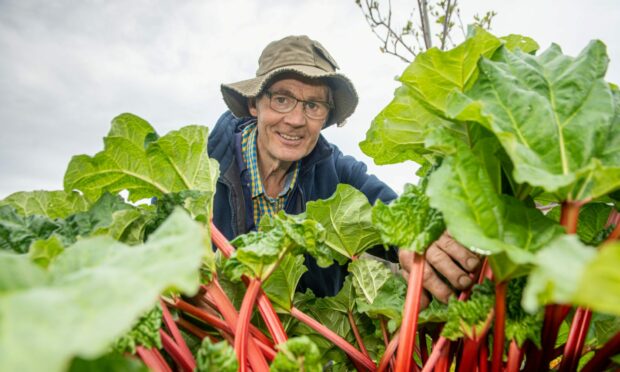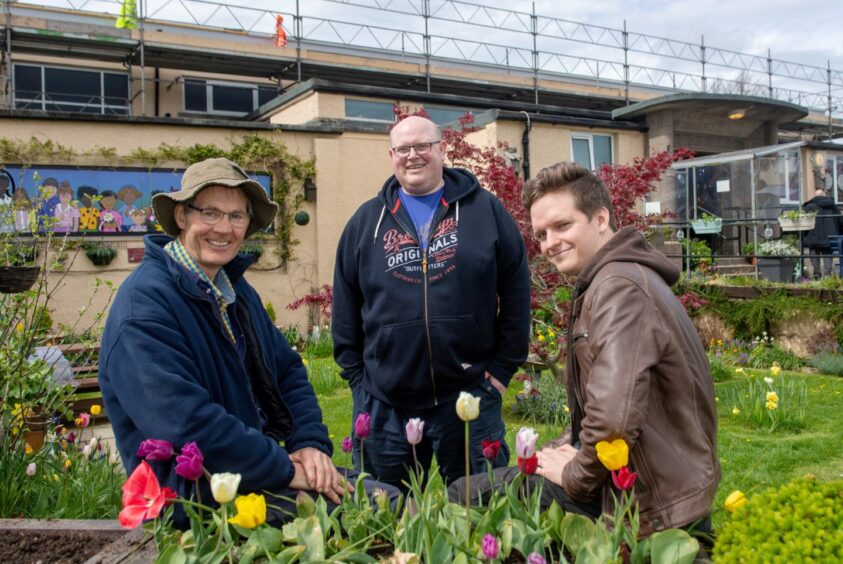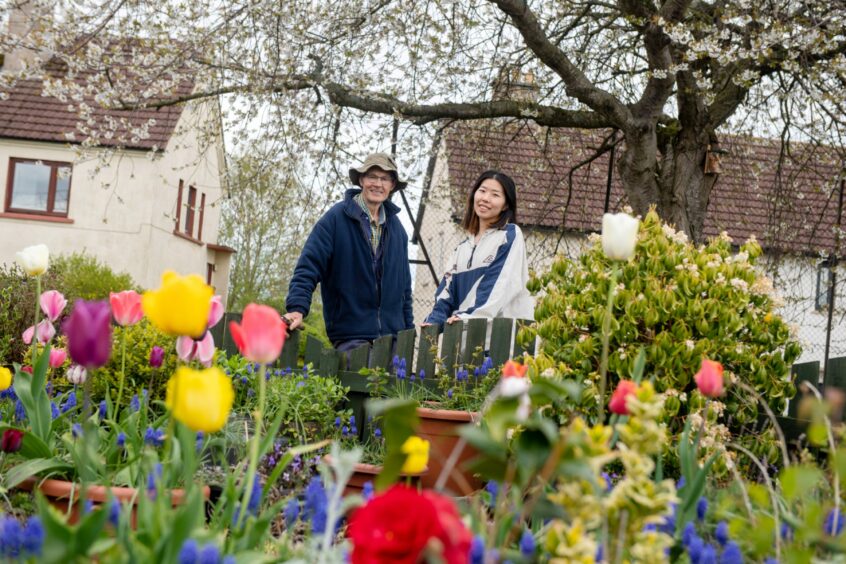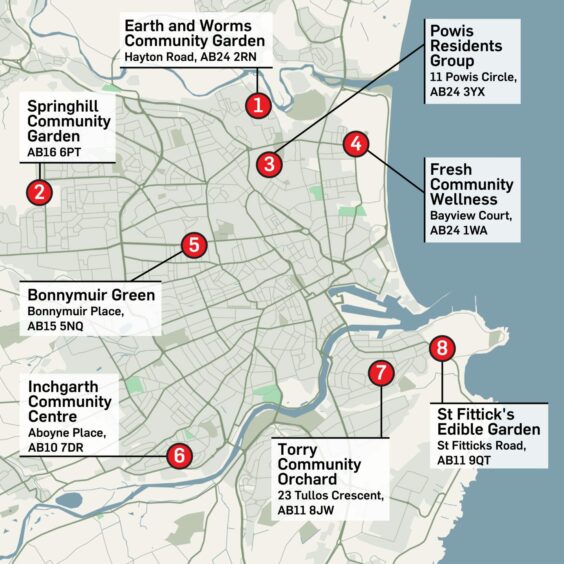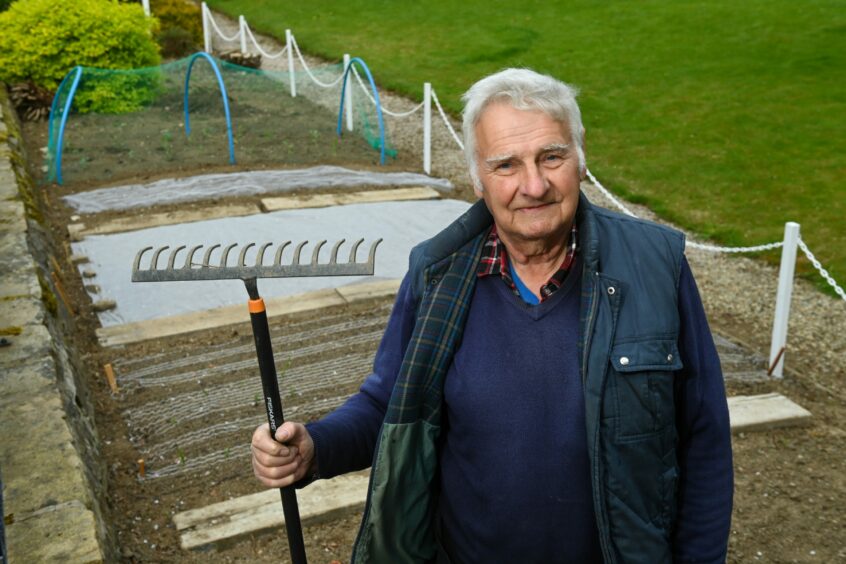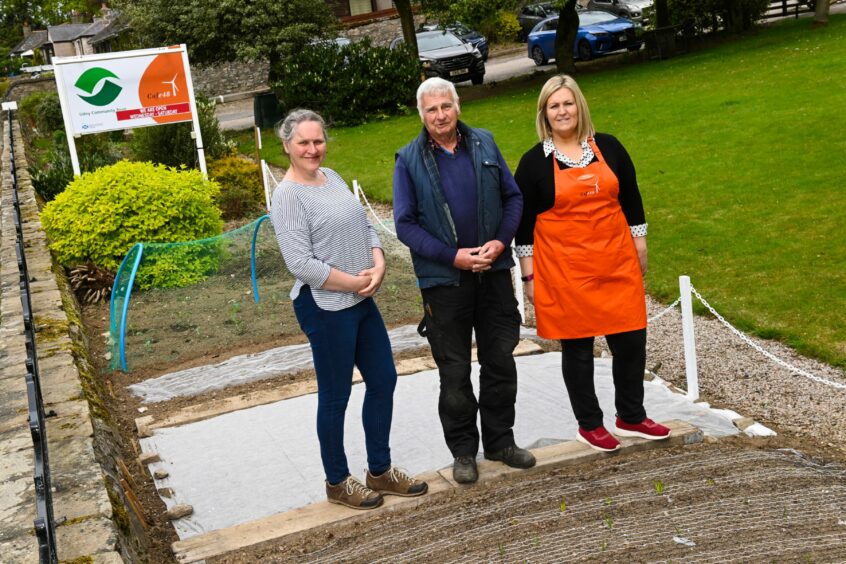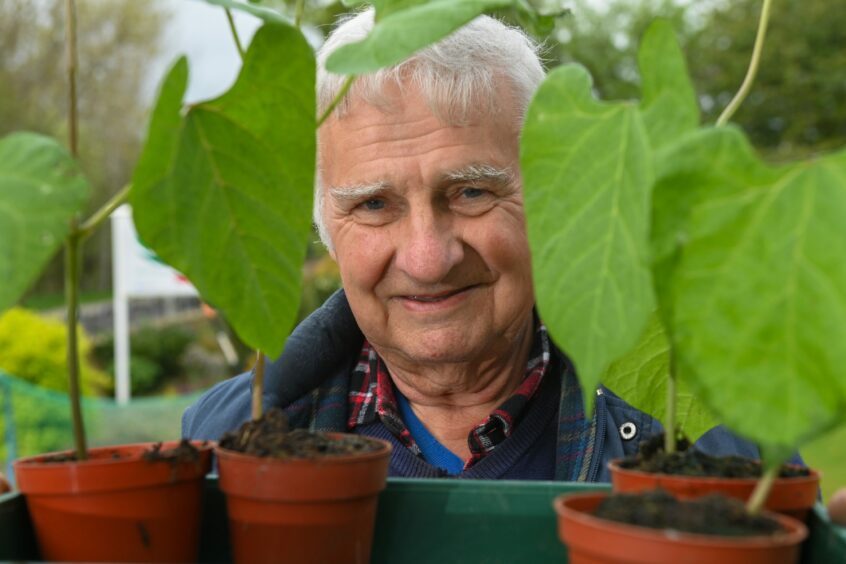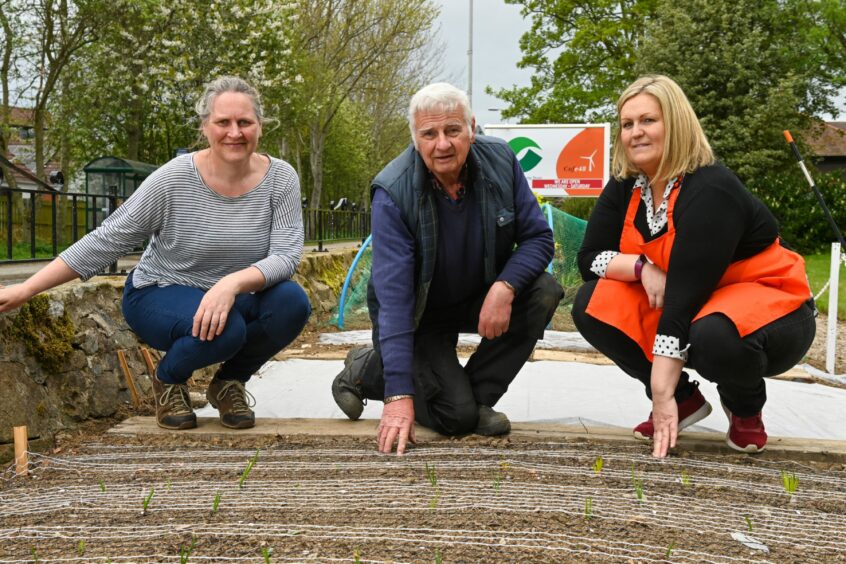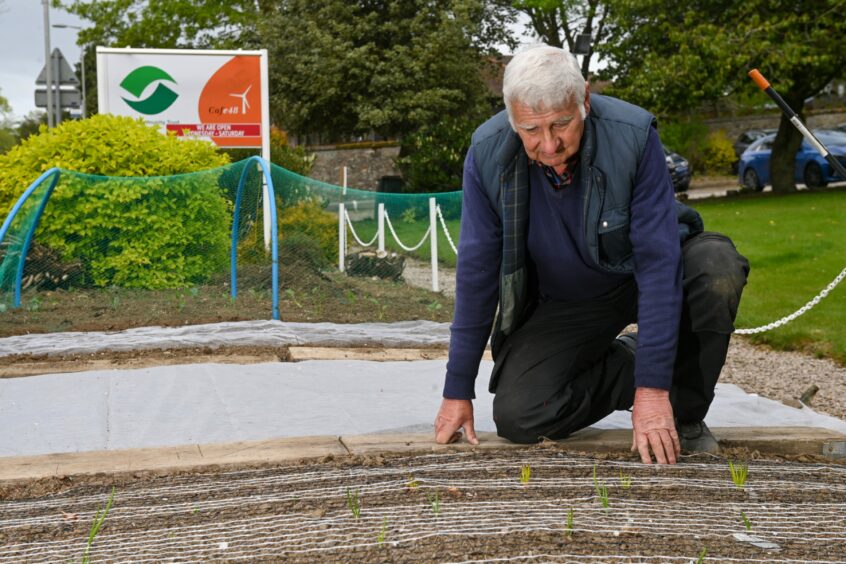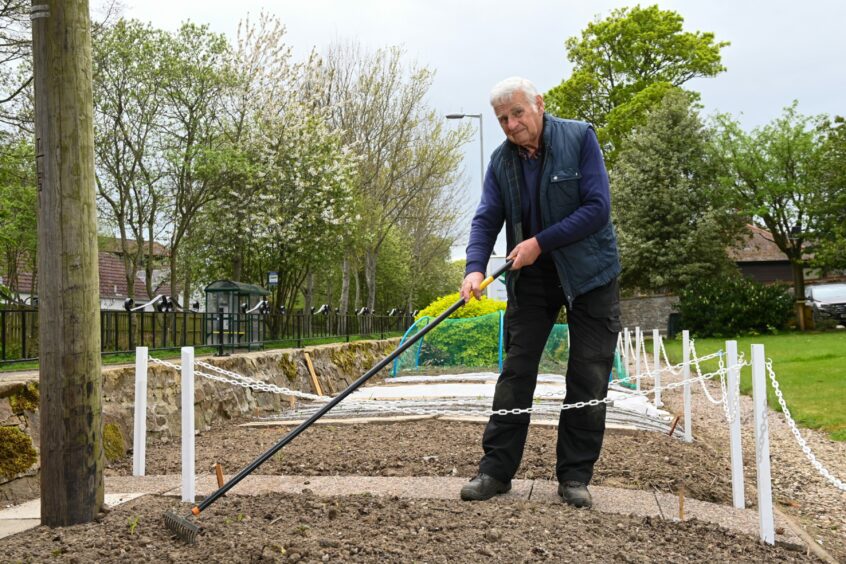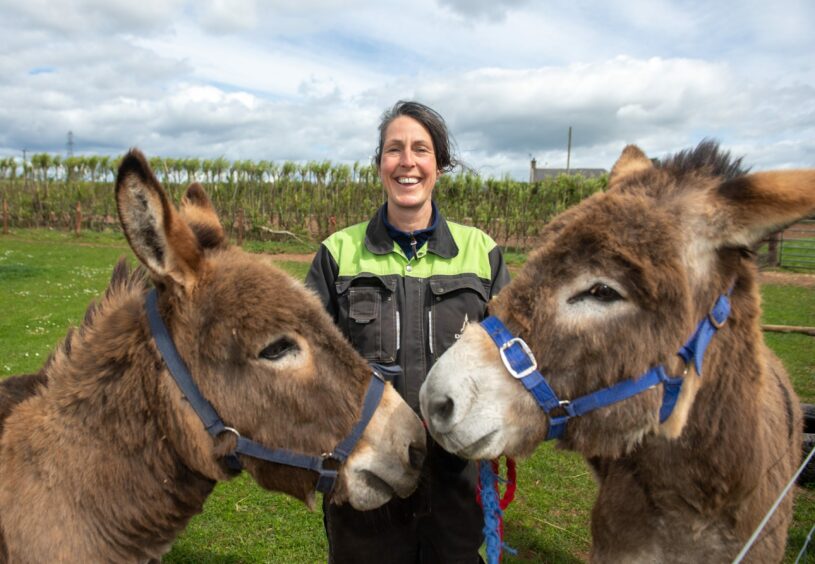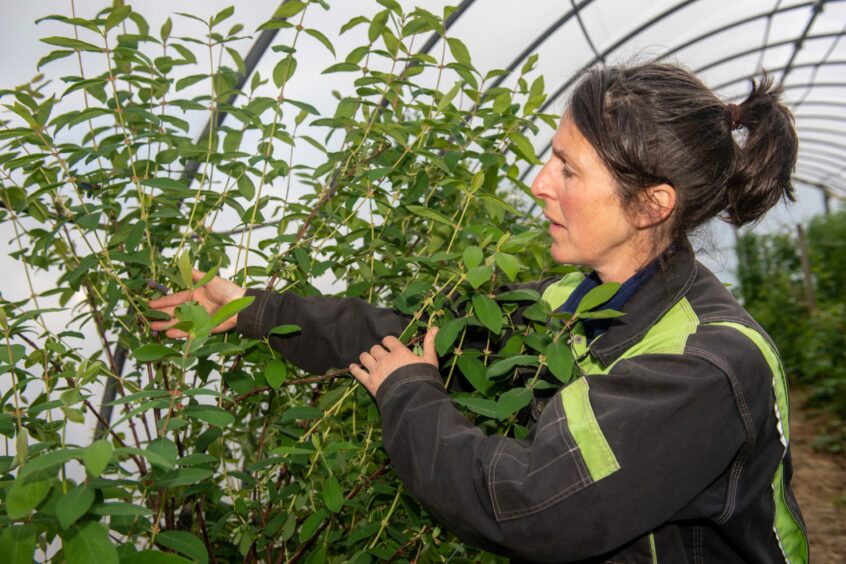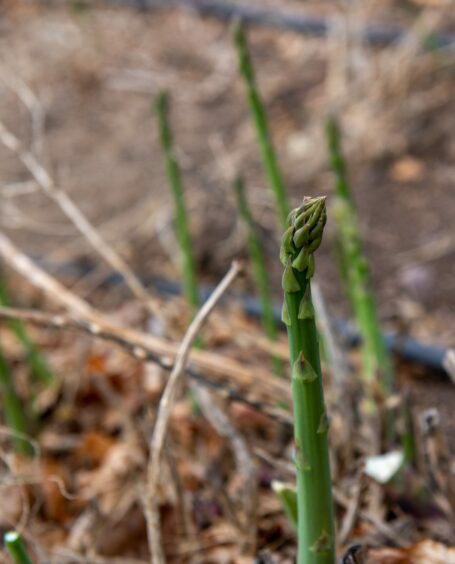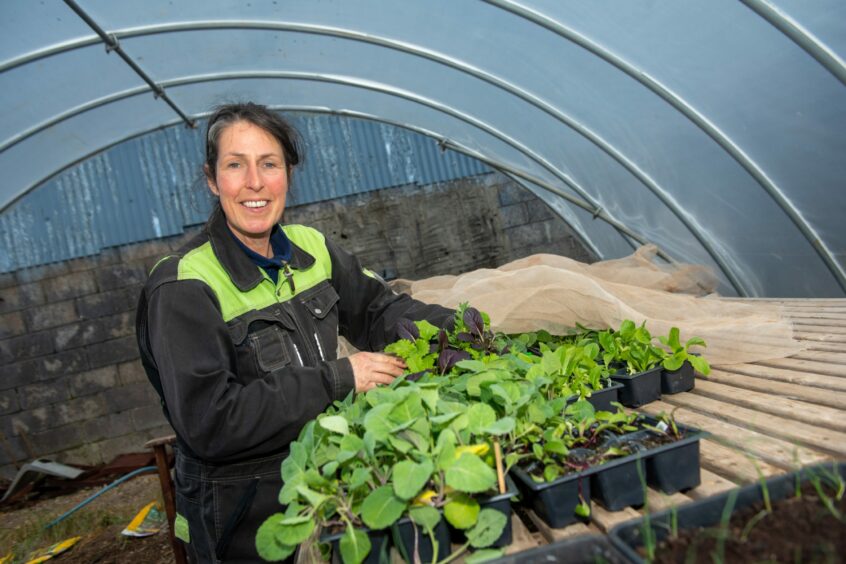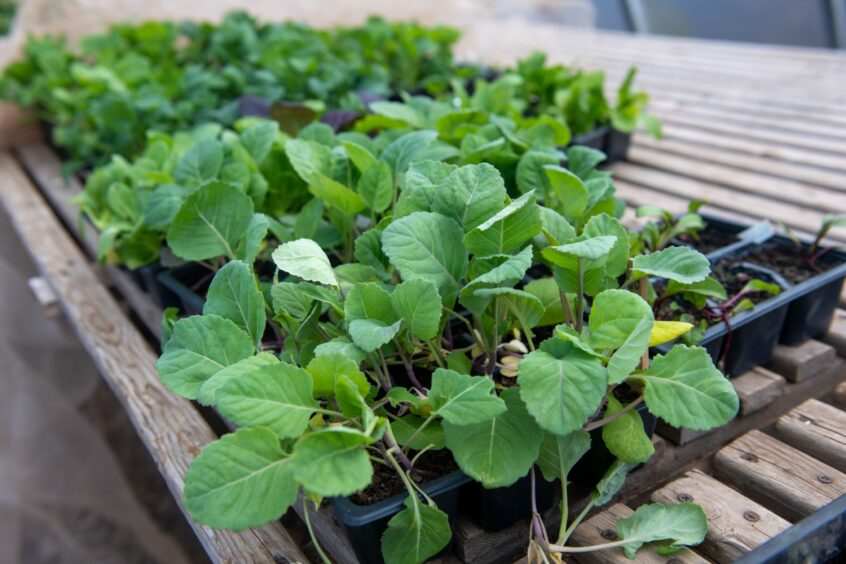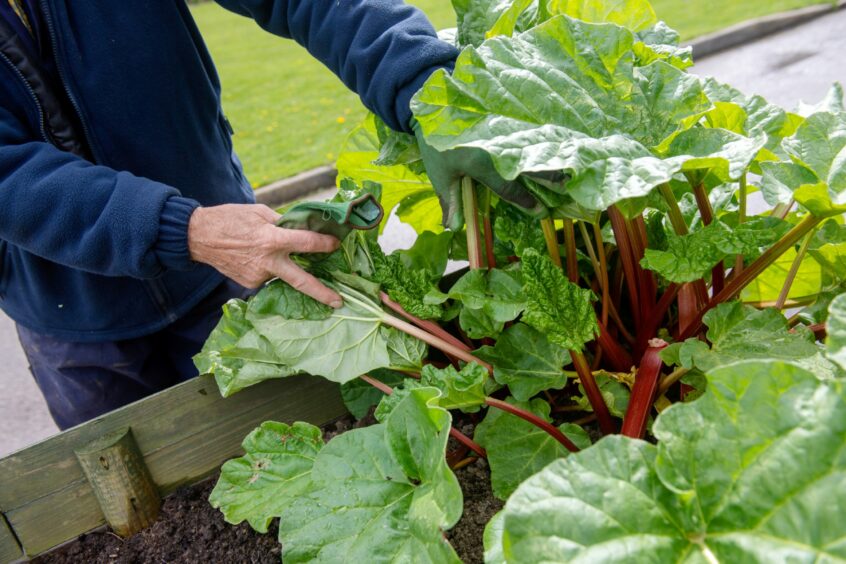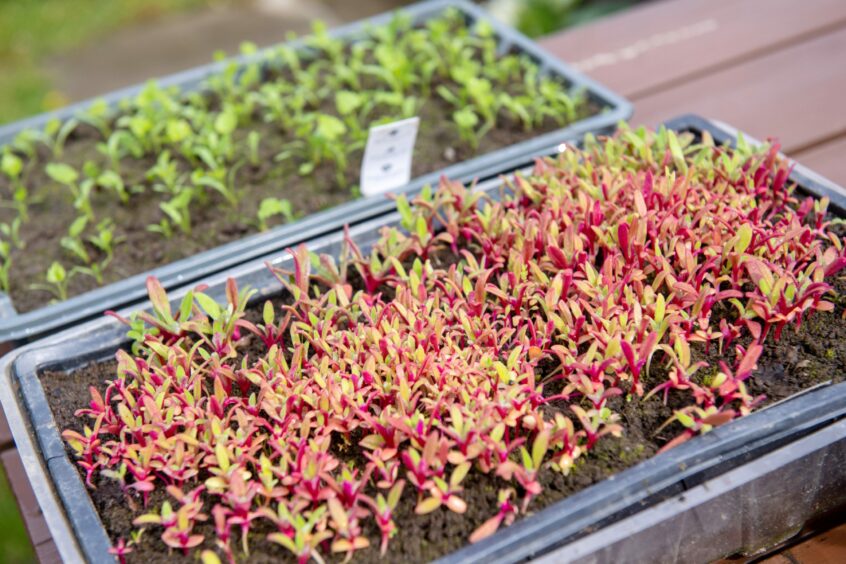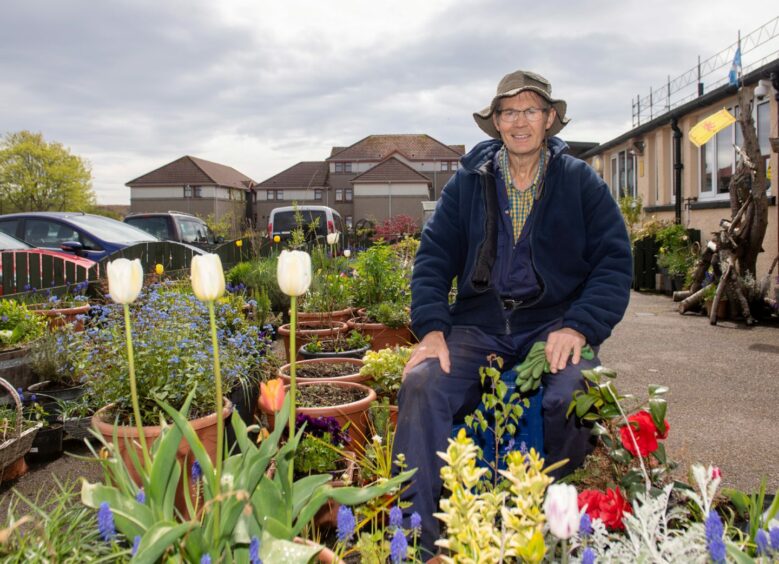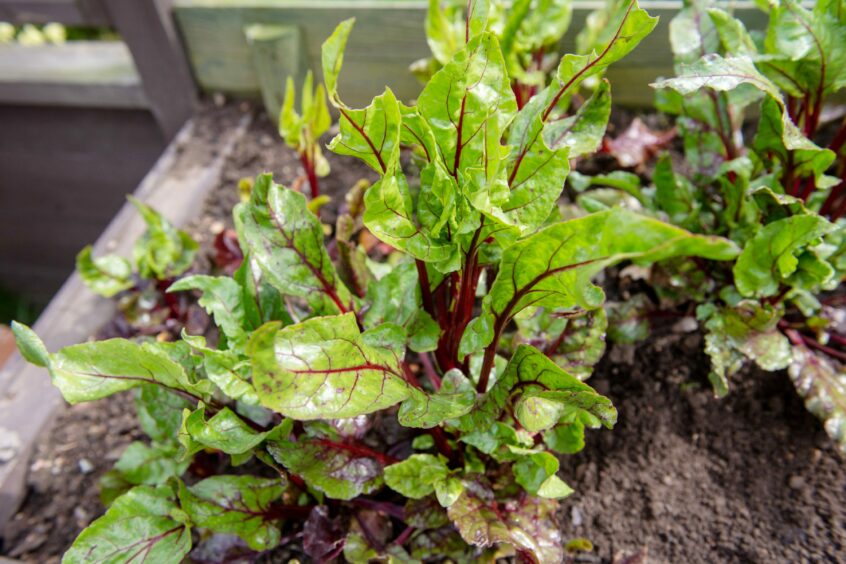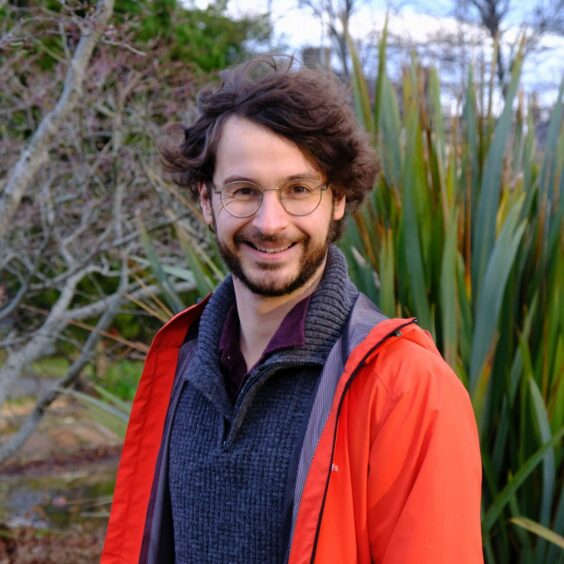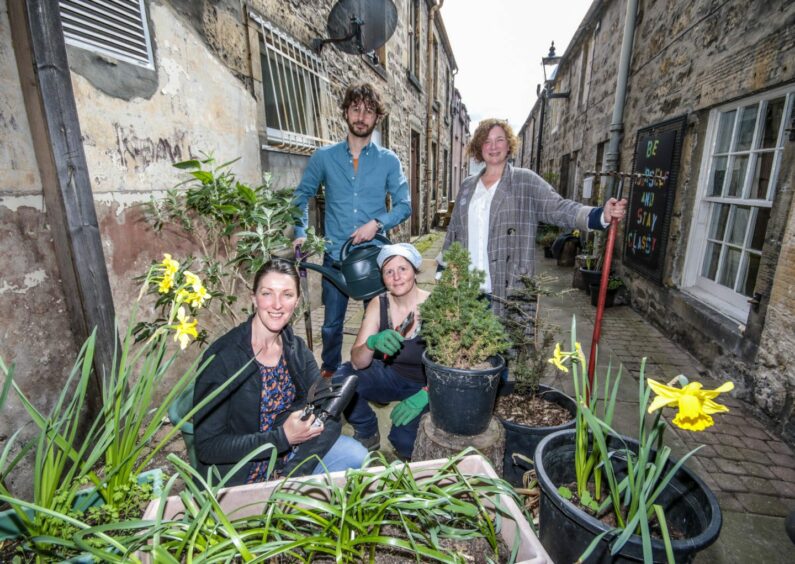The hopeful tinged blush of rhubarb and bashful bloom on a strawberry plant.
Love in every tentative shoot, edging through the damp earth and into sunlight.
Even those who were never previously keen gardeners can quickly become hooked on growing fruit and veg, be it in a modest window box or tidy allotment.
It’s no secret that lockdown saw people take up growing their own produce, with helpful groups on social media offering advice and expertise.
But with the rising cost of living and difficulty in supply chains, could we see a return to the days of old – where sowing seeds becomes a much-needed meal ticket?
From low food miles to guaranteed freshness, dozens of community groups across the north-east have taken it upon themselves to set up brilliant projects.
Concrete slabs turned into a flourishing mini allotment at Inchgarth Community Centre, or harvesting tatties on the roadside in Pitmedden – grow your own has never been so prevalent.
The ambitious Dandelion project is also calling on people across Scotland to “Sow, Grow and Share”, in a bid to make growing your own food as easy and accessible as possible to people of all ages and backgrounds.
The free programme will stretch from Scotland’s most remote islands to busy city centres, with hundreds of thousands of plant plugs given away to the public as the summer months approach, alongside the creation of Unexpected Gardens.
If you happen to come across mushrooms growing in a lane just off Forres High Street, well there you have it. Findhorn Bay Arts partnered up with Dandelion in order to make what has been termed Living Lanes.
We caught up with people from across the north and north-east, who believe that digging for your dinner could be the way forward.
Udny Community Trust
If you happen to drive through the village of Pitmedden in Aberdeenshire, you might spot Wullie Matthew leaning on his spade – chatting away to a passer by.
They don’t make them like Wullie anymore, and the kind hearted gent is happy to pass his wisdom on to anyone who might ask.
There’s not much he doesn’t know about gardening, and Wullie is of the generation who grew fruit and veg as the norm.
Udny Community Trust, which is a registered charity, took on the former hotel in Pitmedden on the very first day of lockdown, and is in the process of turning the large building into something pretty special.
There is already Cafe 48 on site, alongside meeting rooms equipped with the latest technology, and an area for children to play.
Be it a walking group or guest speaker, there’s always something going on.
Wullie, however, can normally be found in the gardens where he has poured love and care into creating a vegetable patch.
There’s the array of salad leaves, methodically planted right by the kitchen door, alongside tatties, onions and carrots nestled under protective netting.
Not forgetting tasty shallots, brassicas, pak choi and kohlrabi.
“I learnt from my father and my grandfather, I have been doing this since I could walk,” said Wullie, who also lives close by in the village.
I love being outside in the fresh air, and I love seeing things grow.
“We haven’t asked people to come along and get involved.
“What we have shown them, is that it can be done in the first place.
“We’re trying to enthuse folk into giving it a go for themselves.”
Yvonne McLeod, who is development officer for the trust, explained why funding has been vital in the transformation of the site.
“We applied to the food security fund via Aberdeenshire Council,” she said.
“This enabled us to go on a shopping spree to get the seeds, tools and a little greenhouse.
“There’s spring onions, leeks, beans, spinach, salad, carrots.
“Almost anything and everything.
We’ve been encouraging people to swap plants and we give plants away when we have surplus. We often post on social media to get the word out.
“We hope it will become a bit of a focal point, and Wullie of course has a lifetime of experience.
“We are also a food share partner with Co-op, meaning we are preventing food going into landfill.”
The on-site cafe makes use of the produce grown, meaning it’s mere food metres as opposed to food miles.
The staff, who are led by cafe manager Tracy Gibb, are also constantly learning new skills in order to make produce last longer – from chopping and freezing to pickling.
For Wullie, the rising cost of food is an even bigger reason to get growing your own.
People have car parking spaces these days instead of gardens,” he said.
“If you go into the shops where fruit and veg is allegedly local, it has actually been imported.
“And it’s getting more expensive all the time.
“Take something like potatoes, they are easy to grow. I love growing onions as well.
“People pass by all the time and chat away, it’s getting people interested.
“I always say gardening is trial and error, you learn from your mistakes.
“If it does not work this year, try again next year.”
Farming in the Field Education
Marie Thomson was also raised with a love of the land, but was encouraged by her farming father to forge her own path.
So Marie turned her back on agriculture for a career as a physiotherapist in the NHS.
Fast forward 20 years and Marie returned to her roots.
With no real plan, she has created something wonderful in Laurencekirk.
What’s for Tea Tonight Farm Shop started off as exactly that, a wee shop selling carrots, before demand snowballed.
Marie now has two acres boasting both summer and winter crops, alongside polytunnels and an interesting collection of animals.
Loveable donkeys, Kieran and Johnny, are clearly a highlight for visitors, but Marie has also developed Farming in the Field.
The initiative teaches people how to grow their own produce, and Marie is passionate about inspiring the next generation.
“If there is a need for it and you can teach it, why keep the skills to yourself?” she said.
“There was no blueprint for this, I was a frustrated NHS physio.
https://jwp.io/s/jcc7Ry58
“I was always encouraged away from farming, even though I wore dungarees from when I could manage to pull them on.
“My dad always used to say, the land is not due you a promise. There is a big world out there.”
When Marie felt like she could no longer make the difference she wished to see in the NHS, she returned to farming and the project was slowly born.
She now works with Carronhill School in Stonehaven, alongside home educators and anyone who wishes to gain some knowledge.
“It’s starting to get exciting now, nine people are currently signed up,” said Marie.
“I had hoped I’d see an increase, because I think we are beginning to lose these skills.
“It was that family connection of getting out in the garden with granny, and learning the skills of gardening.
“I think there is very much a need for that, and growing your own produce can be achievable anywhere.
“If you are a family living in a high-rise flat, you can still grow things in window boxes.”
Health and safety regulations mean the public is getting less chance to spend time on working farms, something which Marie is keen to combat.
“I applaud the fact that farms are opening their doors, the more of us that can offer different things the better,” she said.
“Seeing new life be put into the ground, before you pull out that dirty carrot, run it under the tap and take a bite. That’s what it’s all about, the realisation that it doesn’t just come from the supermarket.”
Inchgarth Community Centre
The chances are you’ve heard of Inchgarth Community Centre, after it was awarded a collective MBE in 2018 with the Queen’s Award for Voluntary Service.
Impressive to say the least, but the team at Inchgarth has not sat still.
Dozens of individuals enable a packed programme to take place each week, from Garthdee Pensioners Club to art for adults with additional support needs.
Bryan Hall, however, can usually be found in the gorgeous gardens, which are currently a riot of colour.
The beautiful display is all the more impressive considering that Brian started out with concrete slabs.
There is now an array of fruit and veg, including rhubarb, mint, parsley, spinach and leeks alongside early tatties.
Despite calling upon people to get involved and find out more about growing produce, there hasn’t been much uptake though.
“I am hoping that will change,” said Bryan, who is a retired joiner.
I think it is a generational thing, people have driveways instead of gardens now.
“It is a different era; when I was a child we’d collect all the peelings and take them along to the allotments.
“There is actually a great demand for allotment plots, so we are trying to create an interest here.
“I always say there is no boss in these gardens, you can come along and do your own thing.
“These gardens and the produce are for the public; I often pick produce for the pensioner groups to take home with them.”
Alongside getting people outside and learning about food, Brian wants to promote a connection to the land.
“There’s definitely a disconnection these days, you’d be amazed the amount of people who don’t know what a marrow is,” he said.
“They’ve never seen one growing.
“With the rising cost of living, maybe more people will get involved.”
Findhorn Bay Arts
For Adam Csenki, growing your own produce is but one element of the fantastic initiatives currently taking place in Forres.
He shares the role of emerging creative producer with colleague Eva Zandman, and the pair are currently immersed in Unexpected Gardens as part of the Dandelion project.
The concept is aimed at getting people growing, sharing and celebrating food across Scotland, alongside music and ideas.
The initiative has far-flung origins from Heisgeir, a remote island in the Outer Hebrides.
Peter and Flora Morrison headed for the infertile land 77 years, and their grandson, Pàdruig Morrison, who is a crofter and musician, has since returned.
He spent the trip planting, cultivating and bedding in the first of Dandelion’s Cubes of Perpetual Light – a miniature vertical farm, just a metre cubed but a rival to any trendy greenhouse.
With Dandelion officially launched, fellow programmes have now started, including Unexpected Gardens.
What better place to show that new life can bloom, than on a network of lanes snaking off Forres High Street?
“We’re inviting local people to share their ideas, cultivate roots and fresh connections,” said Adam, who was previously a teacher.
“As part of Living Lanes, we’ve targeted residents who live up and down the lanes off Forres High Street.
“People who might not necessarily have had the space or expertise to grow their own produce in the past.”
Due to the quite often narrow and gloomy space available, the team have had to think outside the vegetable patch.
Vertical planters have enabled produce to grow up towards the light as opposed to the more standard horizontal structure, and whisky barrels have even been turned into runner bean planters.
Lettuce, radish, kale, courgette and mushrooms grown in buckets have all found success on the lanes.
“One of the main aims is to address climate change, and show people that they really can grow their own produce,” said Adam.
“It’s also a chance for residents to get to know each other, and be more sustainable.
“It wasn’t a reaction to the rising cost of living, but that element is certainly becoming more and more engaging.”
The team have also got events in the pipeline, including Strawberry Sundays where you can learn how to get creative in the garden, and of course enjoy strawberries.
“We have such a fantastic climate in Moray,” said Adam.
“The main thing about this project is inspiring people to give it a go.”
